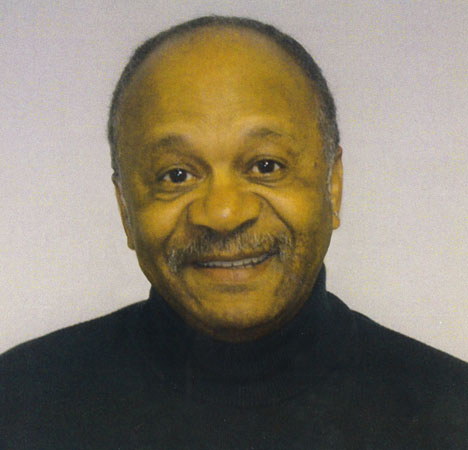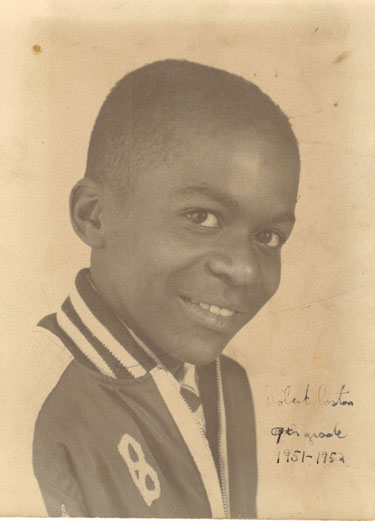“To Scotland and Back” is an autobiography of an African American who grew up in a very unique neighborhood called “East Towson” in the state of Maryland. After his military service Coston came to live in the city of Edinburgh, Scotland. Years later he returned to live in Towson again. The book is the story of that journey.
1. How would you describe your book TO SCOTLAND AND BACK to someone who was not familiar with Scotland or Towson Maryland?
After spending one year in the U.S., three military service years in Scotland and one additional year in the U.S., I returned to Scotland to live and work for a further 14 years. Living and working in Scotland as an African American was a very unique part of my life so I have decided to try and record the events leading up to this adventure that I had the good fortune to experience. East Towson, on the other hand where I was born and raised was an area largely settled by freed slaves from plantations in Maryland and Virginia. The area of East Towson as it was known, was separated from the rest of Towson by an unseen border or boundary line because of the population there being largely African American during the years of segregation.

2. What was the most interesting part of your experiences for you to explore in your book?
The most interesting experiences that I have witnessed and explored in life have been both in East Towson, Maryland as a child and teenager as well as in Edinburgh, Scotland as a young man and adult. Both experiences have afforded me a wealth of learning and knowledge about life itself. Learning about my own heritage from living in East Towson and learning about other heritages while living abroad in Scotland helped greatly to expand my outlook on life as well as to help me to become a better human being.
3. In the cast of people who appear in TO SCOTLAND AND BACK, who was the most difficult to write about? Who was the easiest?
In the cast of people whom I have written about in my book I guess that the person that I had the most difficulty writing about would be my aunt Peggy who was my mother’s sister as she passed away around the time that I was born, so I did not get to know her. The person easiest to write about was my grandmother as she raised me from the time that I was ten years old when my mother died. She was the typical grandmother who became mother, father, aunt and uncle all rolled into one. She was real easy to reflect back on as she told me so many different stories about East Towson when she was growing up and gifted me with many old pictures and memories of the past. My eyes light up when I speak of her, she passed away in 1996 at the age of 96.
4. In your book you write about the changes you have seen in the United States over the years. What was the biggest shock to you upon returning to America after so many years abroad in Scotland?
Upon returning to America I really experienced what is known as “Culture Shock” after being out of the country for 14 years. In some aspects America had changed noticeably, but in other areas it had changed very little. I guess that at the time of my return I did not quite know what to expect from the country of my birth. Fortunately, change has taken place over the years to where the country is now in all aspects of relations. I also had acquired a Scottish accent which probably sounded strange coming from an African American. The Scottish accent however, has diminished over the years since I returned to America.

I think that the Towson, Maryland area that I am familiar with differs from other parts of Maryland because of the proximity to one of the largest slave plantations in the country. The Ridgely Plantation which owned all of the property from Baltimore County to Baltimore City and other surrounding areas. Also, the people and the many characters who resided in the East Towson area. This was a very unique place of which I have never heard of any equal to it.
Every African American school age child in Baltimore County had to attend school at some point at Carver in East Towson. Having grown up in this special area of Maryland I came later to realize as an adult how fortunate I was to have been a part of this experience and history. East Towson is now called “Historic East Towson” which is noted by the signs which are evident when you enter the area.
6. In your book you write how important it is to know and understand the past, yet you also have written that at one time you didn't want to know about the past. What made you change your perspective on this?
As I matured and grew older I realized how important it was to be able to have knowledge about your past in order to be able to have a better future. I realize now that as a youngster the older African Americans avoided talking about slavery or the nearby Ridgely Plantation because they themselves were not too far removed from slavery itself. I now have a desire to learn all about that part of American History and I now find it very interesting. I realize now that most of the American school curriculum only scrapes the surface on this part of the history of our country.
7. What was the easiest, and also the most difficult part of writing your first book?
Writing my first book was far easier than I thought that it would be. I had quite a lot of material and knowledge given to me by my family which made writing this book a pleasure and not a chore. The most difficult part was actually finding the time to concentrate and to make notes of my thoughts.
TO SCOTLAND AND BACK
ISBN 978-615-28185-8
116 Pages, $16.99
retail
Interview from January 2010

